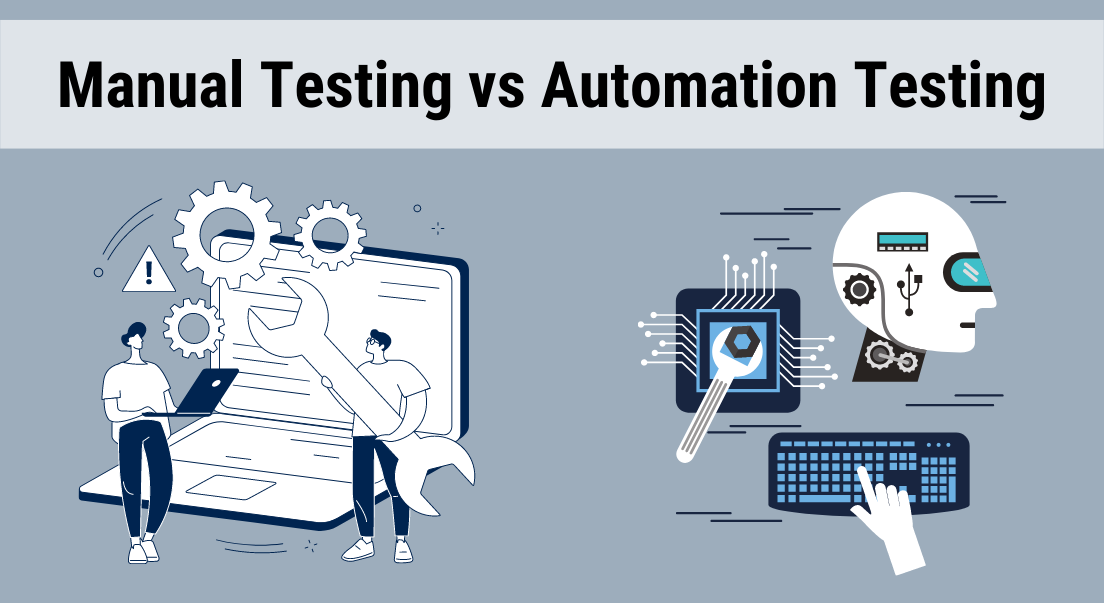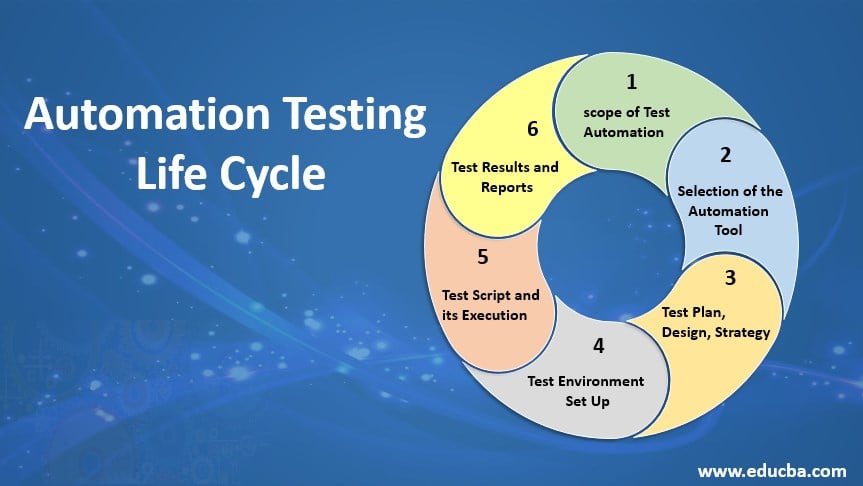The Best Guide to Implementing Automation Testing Effectively
The Best Guide to Implementing Automation Testing Effectively
Blog Article
From Manual to Automated Screening: A Comprehensive Overview to Transitioning Efficiently and Properly
In the world of software program screening, the change from handbook to automated processes has become an increasingly vital transition for companies looking for to improve effectiveness and accuracy in their testing techniques. As modern technology proceeds to development, the requirement for reliable and smooth automatic testing approaches has actually never been more important. The trip from handbook to automated testing is not without its obstacles, however when approached strategically and with a clear strategy in mind, the benefits can be substantial - automation testing. In this comprehensive overview, we will explore vital steps and considerations essential for an effective transition, from the first choice of tools to the assimilation of automation into existing workflows. Remain tuned to uncover the understandings that will aid lead the way for a smoother and extra efficient screening process.
Advantages of Automated Testing
Automated screening offers many advantages, improving performance and accuracy in software program development procedures. One primary advantage is the substantial reduction in screening time. Automated tests can be run simultaneously on several devices and operating systems, drastically accelerating the screening phase compared to hands-on screening. This enhanced effectiveness enables faster feedback on the high quality of the software program, enabling designers to identify and attend to concerns promptly.
Moreover, automated testing guarantees a higher level of accuracy in finding issues. Given that automated examinations adhere to predefined manuscripts, human error is minimized, resulting in more trustworthy examination outcomes. Consistency in testing is additionally boosted, as automated examinations carry out the exact same steps precisely each time they are run. This consistency is essential in ensuring that all functionalities of the software program are extensively checked, minimizing the probability of undiscovered bugs sliding with to production.
Choosing the Right Devices

First of all, evaluate your goals and demands. Recognize the scope of your job, the innovations included, and the capability of your group. This evaluation will help you determine the features and capacities you need in your testing devices.
Second of all, think about the compatibility of the tools with your existing systems and procedures. Seamless integration with your existing software program advancement lifecycle is necessary to guarantee a smooth transition to automation.
In addition, examine the scalability and flexibility of the devices. As your testing needs advance, the tools should have the ability to adapt and suit modifications efficiently.
Lastly, consider the support and area around the tools. Robust assistance and an energetic user area can supply important resources and aid when applying automated testing. By very carefully considering these elements, you can select the right devices that align with your needs and set the phase for a successful shift to automated screening.
Writing Reliable Test Manuscripts

When crafting examination scripts, it is important to think about the details demands of the software being checked and ensure that the scripts resolve all vital functionalities. Detailed and clear naming conventions for examination manuscripts and test situations can boost readability click this site and maintainability. Furthermore, including error handling systems within the examination manuscripts can help in determining and resolving issues immediately.
Furthermore, organizing examination manuscripts right into modular components can enhance reusability and scalability, lowering redundancy and enhancing effectiveness in examination manuscript upkeep. Regular evaluations and updates to check manuscripts are crucial to equal advancing software requirements and performances. By complying with these concepts, testers can develop effective and robust test manuscripts that add dramatically to the success of automated screening processes.
Integrating Automation Into Workflows
Efficient integration of automation tools into existing process improves and enhances procedures efficiency within software application growth cycles. When including automation right into process, it is vital to recognize recurring jobs that can be automated to save time and decrease human error. By perfectly integrating automated testing tools like Selenium or Appium into the software program growth lifecycle, groups can accomplish faster comments on code modifications, resulting in quicker bug discovery and resolution. This assimilation permits constant testing throughout the development procedure, making certain that any kind of problems are identified at an early stage, resulting in higher software program high quality. Furthermore, automation can be used to trigger examinations instantly after each code dedicate, offering immediate validation and liberating testers to concentrate on more complex circumstances. Correct assimilation of automation tools requires cooperation in between advancement, testing, and procedures teams to establish a unified workflow that maximizes effectiveness and efficiency in providing premium software application products.
Making Certain a Smooth Shift
Efficiently transitioning to automated testing includes careful preparation and cautious implementation to minimize disturbances and optimize performance in the software advancement process - automation testing. To make sure a smooth change, it is necessary to start by carrying out an extensive evaluation of the existing screening procedures and identifying locations where automation can bring one of the most significant benefits. Engaging with all stakeholders at an early stage in the procedure, consisting of why not try these out programmers, testers, and task managers, is essential for gathering assistance and buy-in for the automation effort
Interaction is vital throughout this shift stage. Clear communication of the goals, benefits, and expectations of automated screening assists to handle any resistance or issues that may arise. In addition, giving ample training and sources for team members to upskill in automation devices and strategies is crucial for making sure a successful transition.

Conclusion
To conclude, transitioning from More Help handbook to automated testing uses many advantages, consisting of raised efficiency and reliability. By selecting the suitable tools, writing effective test scripts, and integrating automation perfectly into process, organizations can guarantee a smooth and successful transition. It is vital to accept automation as an important asset in software testing procedures to improve general high quality and performance.
In the realm of software application screening, the change from handbook to automated processes has actually ended up being a progressively vital change for organizations looking for to improve efficiency and precision in their testing methods. Automated tests can be run at the same time on numerous tools and operating systems, considerably speeding up the testing stage contrasted to manual screening. Uniformity in testing is additionally enhanced, as automated tests implement the exact same steps specifically each time they are run.To guarantee the successful execution of selected screening tools, the creation of efficient test manuscripts plays a vital role in verifying the functionality and efficiency of automated processes - automation testing. By adhering to these principles, testers can develop efficient and durable test manuscripts that contribute dramatically to the success of automated testing procedures
Report this page